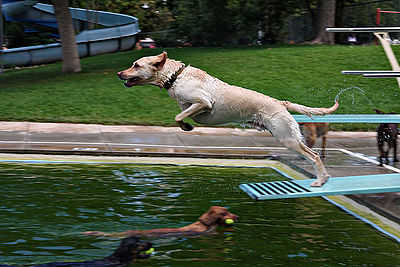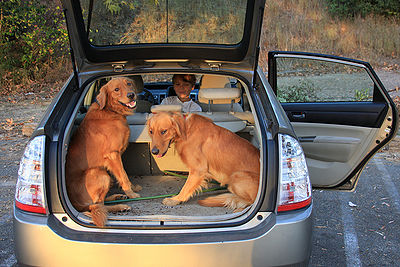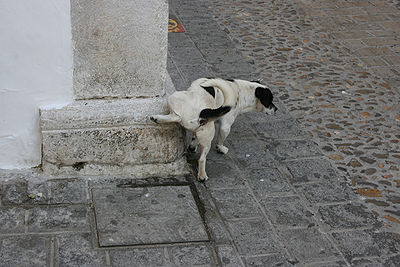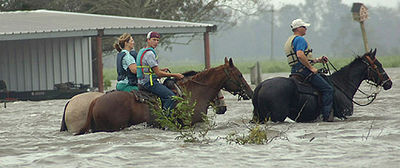
These days lots of people have swimming pools in their backyards. It’s a great way to cool off during hot summer days, for dogs as well as their humans. But there can be hazards to avoid and it’s important to teach your dog pool manners and safety.
Practice stay and wait commands until your dog performs them well. Don’t allow your dog to jump into the pool. A sudden leap can frighten or injure someone already in the pool. Instead teach your dog to use the steps or a slip-proof ramp. Place rough waterproof treads on the steps to avoid slipping. You can also place some kind of marker on the steps that is visible to the dog so that s/he knows the safe place to get out of the pool. Always use the same pool entry and exit with your dog.
Not all breeds know how to swim. Some dogs may be fearful of the water and must be taught to swim. When you begin training, sit on the edge of the pool with your dog and gently splash some water. Starting at the shallow end, hold your dog close to you when entering the pool. Make sure the dog uses his back legs as well as the front ones to swim so his body remains straight. You can help by gently moving the legs.
If your dog is not a strong swimmer, s/he should wear a doggie life jacket. Dogs that have short legs or heavy builds may have a more difficult time with swimming. If your dog is a senior citizen, has a heart condition or has had seizures or any medical condition, ask your veterinarian if swimming is an acceptable exercise.
Drinking chlorinated water from the pool, while not a good idea, is generally not harmful depending on how much is ingested. The amount of chlorine in a home pool is comparatively small. However, if you see your dog actually drinking the water, stop him/her.
Pool covers can pose a danger to dogs and other animals. They can become trapped in them and drown. When not in use, your pool should have a safety fence so that pets and children cant accidentally find their way in. If a fence is not possible don’t allow children or pets near the pool area without constant supervision.
If accidents do occur, all rescued pets should be seen by a veterinarian. Complications such as hypothermia, pneumonia, fluid buildup in the lungs can occur.
Rinse your dog well after a swim to remove any pool chemicals from his body. Pay particular attention to ears, armpits and groin and dry well. Check paw pads and nails for any damage from hard surfaces.
NEVER, NEVER LEAVE YOUR DOG UNATTENDED IN THE POOL OR POOL AREA.
Following these few simple suggestions will keep your pup safe so that you both can enjoy the pool.
Related Articles



